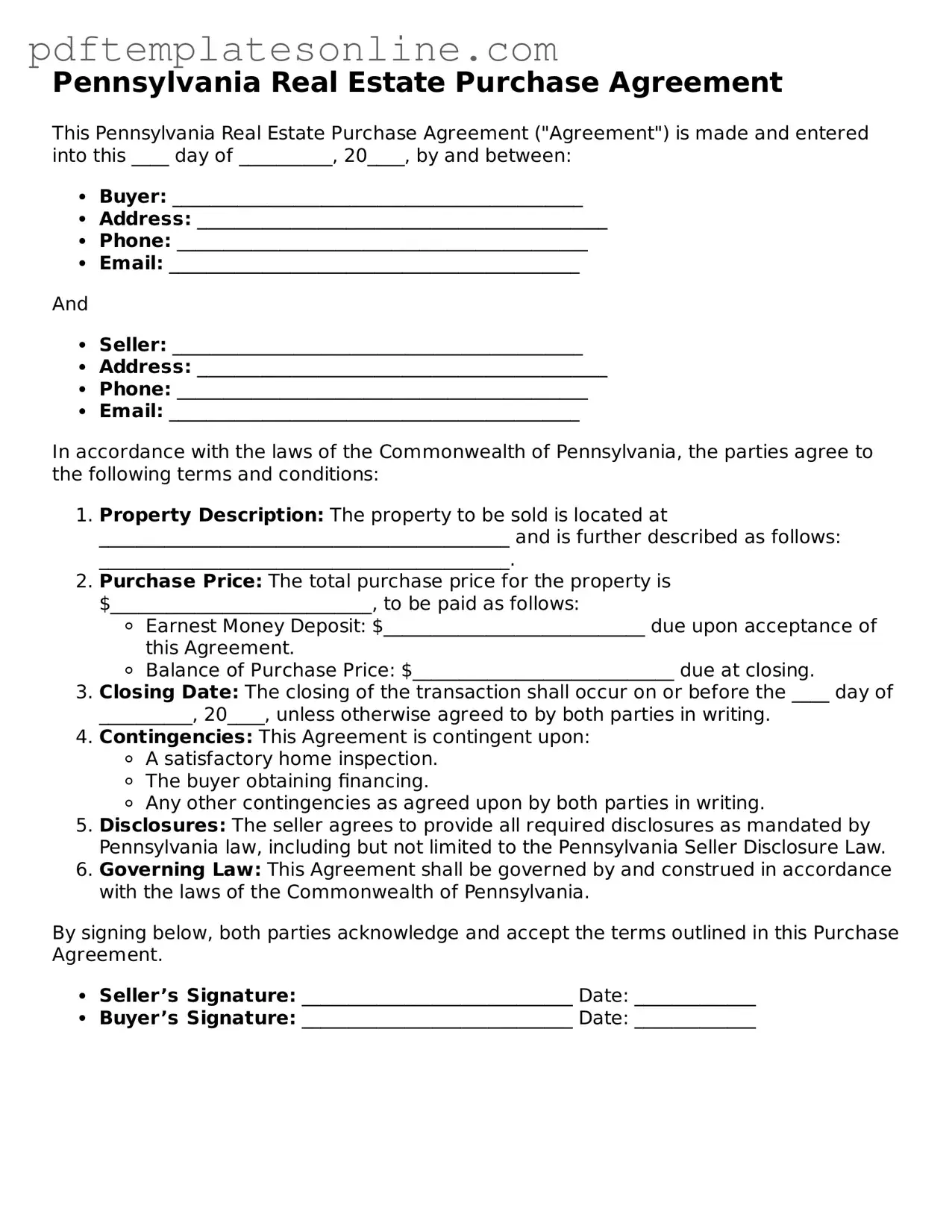Filling out the Pennsylvania Real Estate Purchase Agreement can be a daunting task. Many people, whether first-time buyers or seasoned investors, often make common mistakes that can lead to complications down the line. Understanding these pitfalls is crucial for a smooth transaction.
One frequent mistake is not providing accurate property details. Buyers sometimes overlook the importance of including the correct address, legal description, or parcel number. These details are essential for identifying the property and ensuring that the agreement is legally binding.
Another common error is failing to specify the purchase price clearly. While it may seem straightforward, ambiguities can arise if the price is not clearly stated. This can lead to misunderstandings and disputes later in the process.
Many individuals also neglect to include contingencies in the agreement. Contingencies protect buyers by allowing them to back out of the deal under certain conditions, such as failing a home inspection or securing financing. Without these clauses, buyers may find themselves locked into a purchase that isn't right for them.
Additionally, not understanding the earnest money deposit is a mistake that can have financial implications. Buyers should know how much to offer as earnest money and the conditions under which it may be forfeited. This deposit shows the seller that the buyer is serious, but it also requires careful consideration.
Another oversight is not reviewing the timeline for closing. Buyers often forget to clarify key dates, such as when the closing will take place or how long the seller has to respond to offers. A clear timeline helps keep everyone on track and prevents delays.
Buyers may also fail to read the fine print. Important clauses regarding repairs, closing costs, and other obligations can be hidden in the details. Taking the time to read and understand these sections can save a lot of headaches later.
Some individuals make the mistake of not consulting a real estate professional. While it might seem like a cost-saving measure to go it alone, having an expert can provide valuable insights and help avoid costly errors.
Lastly, neglecting to sign and date the agreement is a simple yet critical mistake. An unsigned contract is not legally binding. Ensuring that all parties have signed and dated the document is essential for its validity.
By being aware of these common mistakes, buyers can approach the Pennsylvania Real Estate Purchase Agreement with confidence. A little attention to detail can make a significant difference in the home-buying experience.
